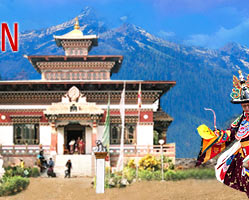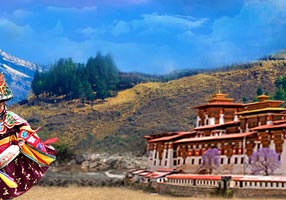Sprawling across 1723 sq km, Jigme Singye Wanchuck National Park is the second largest protected area of Bhutan. Formerly known as the Black Mountain National Park, it has now been renamed after the present and fourth monarch of Bhutan. The Park boasts of a variety of habitats, vast tracts of primary forests and altitudes ranging from 200 m to 5000 m above sea level. There are sub-tropical and broadleaf forests in its south, low conifer forests in its center and perennial snow on the high peaks in its north. Situated in central Bhutan, Jigme Singye Wangchuck National Park is home to about 395 species of birds including the endangered rufous-necked hornbill, Ward's trogon, Satyr tragopan and white-bellied heron.
Seven of the bird species that make this National Park their home are listed among the globally endangered species. Rainfall varies too in different areas of the National Park and thus, this wildlife sanctuary arbors wide diversity of climatic conditions, making it suitable for many different flora and fauna species. Jigme Singye Wangchuck National Park has one of the highest coverage of mature fir, pine and other types of broadleaf forests that are considered to be the one of the few virgin and undisturbed tracks of forests in the Eastern Himalayas. The terrestrial fauna found here includes rare and endangered species such as musk deer, Himalayan black bear, golden langur endemic to Bhutan, clouded leopard, red panda and Royal Bengal tiger.
The eastern part of this National Park boasts of 20% of Bhutan’s tiger population and is said to be an important link between the northern and southern tiger population in Bhutan. Phobjikha valley, situated to the northwest of the park (which is considered to be the buffer zone of the park), is the winter habitat of the black-necked cranes. More than 260 cranes migrate to this place every year in winter. It is under the Royal Society for Protection of Nature. About 6000 people live inside the park whereas about 15000 people are estimated to find their homes within 5 km periphery of the Park. These people produce crops such as paddy, maize, wheat, buckwheat, millet and potato and raise livestock consisting of cattle, yaks, sheep, horses and goats.




